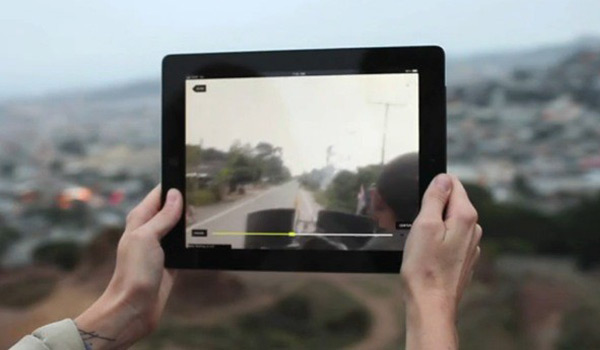Last Updated on June 21, 2012 by New-Startups Team
Condition One, recently featured at the TechStars Demo Day in NYC, have created a thrilling innovation in the form of an embeddable immersive video player for the iPhone and iPad. The technology enables viewers to bend the perspective of the video they are watching nearly 180 degrees with a simple swipe of their touchscreen. Let’s say you were watching a basketball game and wanted a glimpse of some of the action taking place in the peripheral of the camera view – thanks to Condition One you can swipe or pan your iPad/iPhone in the direction of the view you want and get up to speed on whatever was taking place. Imagine, for instance, watching a live Google Street view and you should have a pretty good idea as to what kind of experience the technology can offer.
The potential applications of the technology are as numerous as they are intriguing. Condition One’s value in offering an immersive video experience to an extent not previously observed could be harnessed by conflict journalists (in fact Condition One’s founder Danfung Dennis has been covering wars in Iraq and Afghanistan since 2006), sports television broadcasters, concert documentarians, and even music video directors looking to produce videos that offer the viewer a greater degree of interactivity and what some have described as a new form of augmented reality.

What is really interesting about Condition One is the implication that mobile devices capable of playing high quality video content may open the door to new ways of viewing and creating media. While the iPad and iPhone may have been immediately recognized as a new medium and distribution channel for many different kinds of videos it would probably not be fair to say that mobile devices have significantly changed the way video content is actually produced. Condition One has grasped the power of the swiping and tilting mechanisms mobile devices provide and the technological advancement they have facilitated is likely to lead more and more video directors to consider the possibility of offering a broader visual canvas within any form of video expression they endeavour to create.
Consider, for example, the impact advances in 3D video technology had on films like Avatar and Hugo. The nature of the visual expression achieved in both films was informed, to a significant extent, by the newly found premise of high quality three dimensional viewing technologies being available to audiences and filmmakers. It’s interesting to speculate as to what new forms of video expression may be achieved by Condition One’s product. Is the video player they’ve designed the mobile device equivalent of 3D glasses?
Evidently the potential for Condition One’s applications to exploit and perhaps create new forms of video has been recognized by Mark Cuban who recently led a $500,000 seed round of funding for the company. Perhaps Mark Cuban’s plans to rebrand HDNET and move its content further towards live entertainment and music events provides some clue as to where Condition One’s technology will go next.